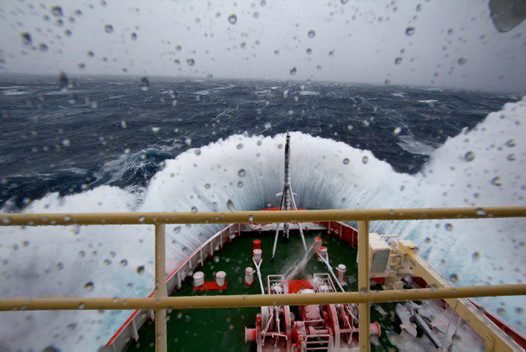8 April: Meet the team (Scotia Arc Expedition 2013)
Join us as we travel to the end of the earth to unravel some of nature’s mysteries!

© Greg Rouse
This expedition will take a journey along the northern part of the Scotia Arc- the series of islands and ridges that track where Antarctica and South America used to join.
Our research aims to understand whether animals also use these places as a series of ‘stepping stones’ to travel between these continents. Our earlier expedition (in 2011) featured in the Australian Museum’s Deep Oceans exhibition.
We plan to sample invertebrate animals and use the power of DNA to estimate how far these animals travel. This will help us determine if their movement patterns change in the future, when Antarctica might be a little warmer and a little different.
Will we be able to detect new animals moving into Antarctica for the first time?
Meet the team and follow us as we blog our way through the expedition:
"I'm the Chief Scientist and Principal Investigator on the NSF grant that is supporting this expedition That means I wont get much time off! I love being at sea and seeing the amazing diversity of life that lives down here. I heart slugs."
- Nerida Wilson, Australian Museum Scientist
"I'm also a Principal Investigator on the grant that supports this expedition, and will lead the morning shift. I love taking photographs of the tiny animals that are easily missed in a huge trawl. I usually study the evolution of polychaete worms and other marine invertebrates."
- Greg Rouse, Professor, Scripps Institution of Oceanography
"I'll be fishing for nudibranchs, nudibranch prey and nudibranch predators. The full trophic triad. In search of cheomdiversity and the ecology that drives it."
- Bill Baker, Professor, Director of the Center for Drug Discovery and Innovation, University of South Florida
"I'm Stephanie and I have lots of experience working in marine invertebrate collections. I'm here to help sort and process the trawls. I love being on Mother Ocean, and cannot wait to see some of the places we are planning to go!"
- Stephanie Baccarella, Australian Museum Alumnus
"I'll be helping with the sorting and classification of the animals we bring up from the bottom. I will also help with the molecular biology when we get back to San Diego."
- Jose Carvajal, Scripps Institution of Oceanography
"The topical waters of coral reefs are my ‘normal’ research home. However, once in a while it is time to cool off. … I love the sea and am excited to be seeing cooler oceans and the critters that live there."
- Anke Klüter, University of Buffalo/University of California, Merced
"As an aspiring marine biologist, I couldn't think of a better adventure that would include such an awesome learning experience. I'll be helping out with the organizing and sorting of the inverts as they come on board. All hands on deck!"
- Mitch Mandell, Scripps Institution of Oceanography
"I'm a second-year graduate student at SIO with an interest in polychaete worms, and I will be helping to sort and process specimens from the benthic trawls."
- Jenna Moore, Scripps Institution of Oceanography
"My name is James Tickner and my role on this expedition will be sorting through trawls for our target critters, then photographing and sampling the (un)lucky ones. Another key duty will be keeping the team entertained with my always excellent singing."
- James Tickner, Australian Museum
We will also have observers joining us from the countries whose waters we’ll be sampling in (Chile, Argentina, and the U.K.).

